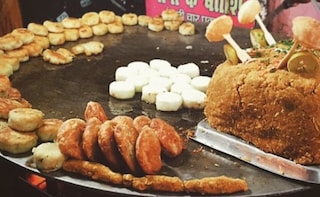In Lucknow, when we were growing up in the 1980s-1990s, the aspirational place to go to for chaat was King of Chaat in Hazratganj. The likes of Shukla Chaat that so many now talk about had not been discovered in pop circuits just as yet and King was king as the legend went because the income tax department had counted the number of pattals strewn around his stall, determined the annual income and raided the chaatwallah for hiding it!
Advertisement
White peas, dried, on the other hand, found other use. If the green peas were sought after for their sweetness and tenderness, the white peas were an easy source of nutrition, with more of the starch content than the exotic peas-in-pods. They were commonly available and cheaper ingredients.
Advertisement
Advertisement
For the latest food news, health tips and recipes, like us on Facebook or follow us on Twitter and YouTube.
Advertisement
